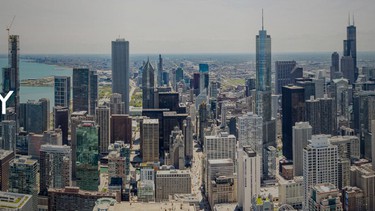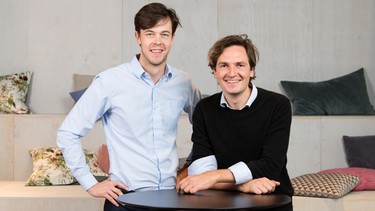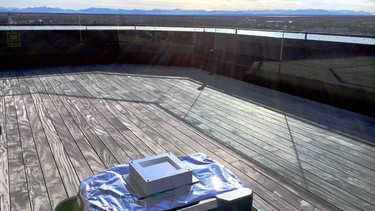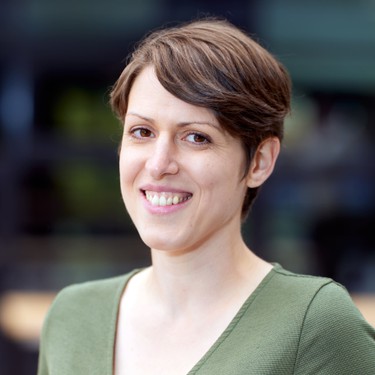Cold Ray - A Passive Cooling System To Save CO2 Emissions

How would you describe your business idea to a potential investor?
Our vision is to provide entirely emission-free air conditioning systems. Essentially, our approach is to turbocharge the process by which objects naturally cool down — radiative heat exchange. The core of our system is a radiator that will be placed on the roofs of buildings and that radiates away the heat contained in a building. This is achieved by circulating a coolant through pipes running through the building and the radiator. What is unique about our approach is that it will allow us to reduce the electricity input required to provide air conditioning to an absolute minimum. This is a crucial step forward in the quest to minimize the carbon footprint of housing.
What problem do you want to solve, what is your goal?
At the moment air conditioning is responsible for about 3 percent of global carbon emissions. That is already more than the emissions associated with air traffic and shipping combined! There are indirect and direct emissions associated with traditional air conditioning technology. Indirect emissions result from electricity consumption, which globally is still heavily reliant on prime energy input, i.e. fossil, non-renewable sources. Direct emissions result from the usage of so-called refrigerants which are highly powerful greenhouse gases when released into the atmosphere. Our technology will eliminate both sources of carbon emissions. Given that the demand for air conditioning is projected to triple in the coming decades, alternatives to dominant technologies are imminently required. Our aim is to provide such an alternative.

How did you come up with your idea/concept?
Like all good ideas, this one was essentially born in a pub. Felix had come across passive cooling approaches as a lecturer in Energy and Process Technology. At some point, whilst preparing the lectures, he realized the potential of radiative heat exchange for air conditioning purposes. Kim and Felix met in a London pub and pondered passive cooling, its applications and the possibility of starting a company on it — Cold Ray unfolded from there.
What is your business model?
Our goal is to make sustainable cooling a reality as fast as possible and to transform the global air conditioning market. To speed up the sale of PDRC radiators across global markets, Cold Ray will implement a licensing scheme, rather than manufacturing its products itself, which would require it to build and operate considerable production capacities. Implementing a licensing scheme in our view has two huge advantages. First, it means that Cold Ray can focus all its efforts on R&D and market intelligence and will not have to operate and constantly modernize costly, slow-to-adapt production facilities. Second, collaboration with non-EU OEMs will make it easier to gain access to their respective home-markets, meaning that the much-needed transformation of the AC market can be brought onto a global level much quicker than would be possible otherwise.
Air conditioning has hardly changed in over 100 years. Why would people switch to your technology?
The need for electrical energy is built into conventional AC systems — there is no way around it. Passive cooling technology, on the other hand, requires no electricity input, meaning that installing our system will actually save our customers a lot of money! But perhaps even more importantly, it prevents a considerable amount of emissions because it doesn’t rely on harmful refrigerant gases and saves energy. In the majority of regions around the world, regulations for building efficiency are being severely tightened to the effect that, for instance in the EU, high-emission, traditional AC systems will be effectively outlawed. So, people will need solutions such as ours if they want to provide AC for their buildings. Incremental improvements in conventional AC technology simply don’t cut it anymore. This is where genuine innovation is needed — exactly what we aim to provide.

What kind of support would help you the most to get ahead as fast as possible?
As you can imagine, given how young we are as a company, there are quite a few things where support would be great. Just to name a few: We are looking for corporate partners who are enthusiastic about green tech in the building sector and could help us realize our first pilot projects. These could be landlords who would be interested in installing our technology, or construction companies, architects, or energy and building technology experts, who might want to help us by sharing their expert knowledge. We are also looking to grow our team. So, if anyone reads this who would like to join us, please get in touch. Finally, even though we are fortunate to be financially supported by the ESA BIC, the Bavarian Ministry for the Economy, and the EIT Climate KIC, we are presently looking for some early-stage investment.
Why did you decide to work with XPRENEURS?
While we have experience in the energy sector — both technically and economically — we haven’t started a business before. To kickstart our entrepreneurial careers, we needed knowledge, experience, and contacts. The XPRENEURS program has already given us a tremendous boost in that respect!
You can get more information about Cold Ray on their website.
You want to become part of the XPRENEURS incubator program as well?
Get more information and apply at https://xpreneurs.io/
